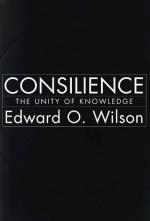|
This section contains 505 words (approx. 2 pages at 400 words per page) |

|
The Great Branches of Learning Summary and Analysis
The evidence from the natural sciences shows that Enlightenment thinkers made correct assumptions about the material world as well as the unity of knowledge. They attempted to link sciences and humanities, but despite their efforts the current state of knowledge is fragmented.
Consilience, a term revitalized by Edward Wilson, implies an agreed approach to different subjects, and linking facts and theory to provide a unified justification. Through consilience theories and facts can be tested. One way of testing its effectiveness is employing it in social sciences and humanities. When linking environmental policy, ethics, social science, and biology, we discover that inquiries in one area can lead to reasoning in other areas. Some areas have little analysis. Subsequently, no sufficient knowledge of ecology exists to formulate ethical guidelines to achieve agreement. There is also...
(read more from the The Great Branches of Learning Summary)
|
This section contains 505 words (approx. 2 pages at 400 words per page) |

|




